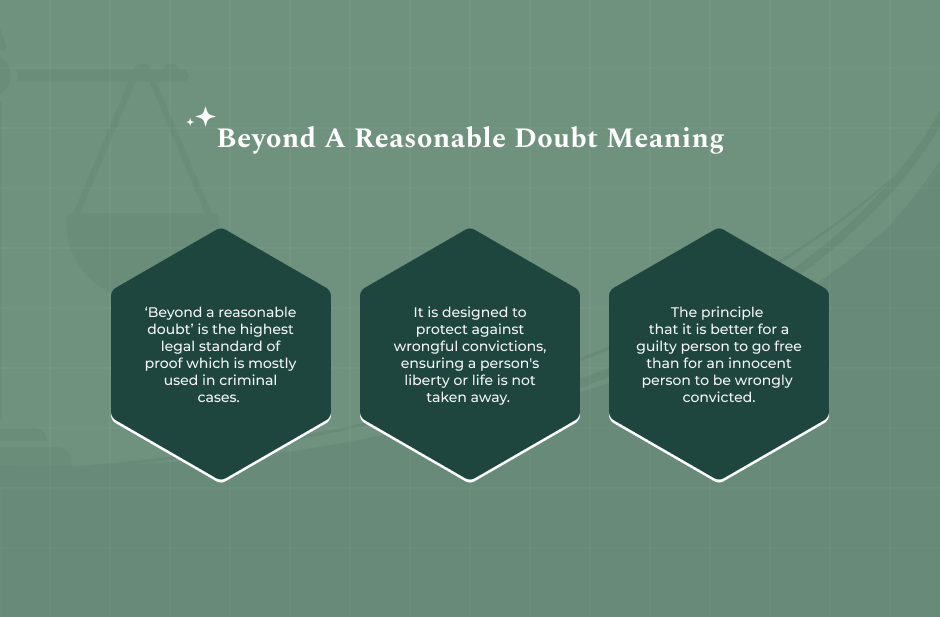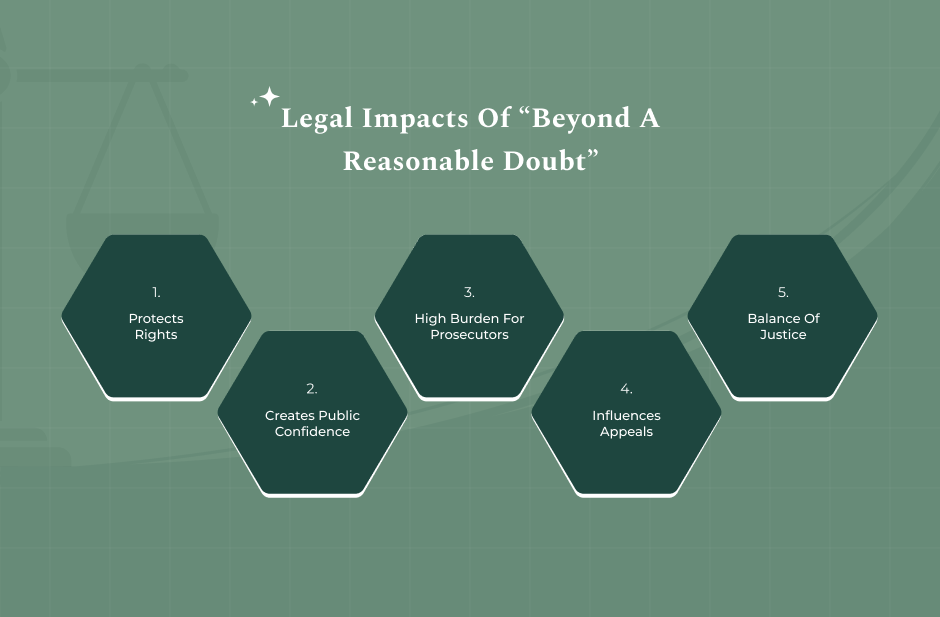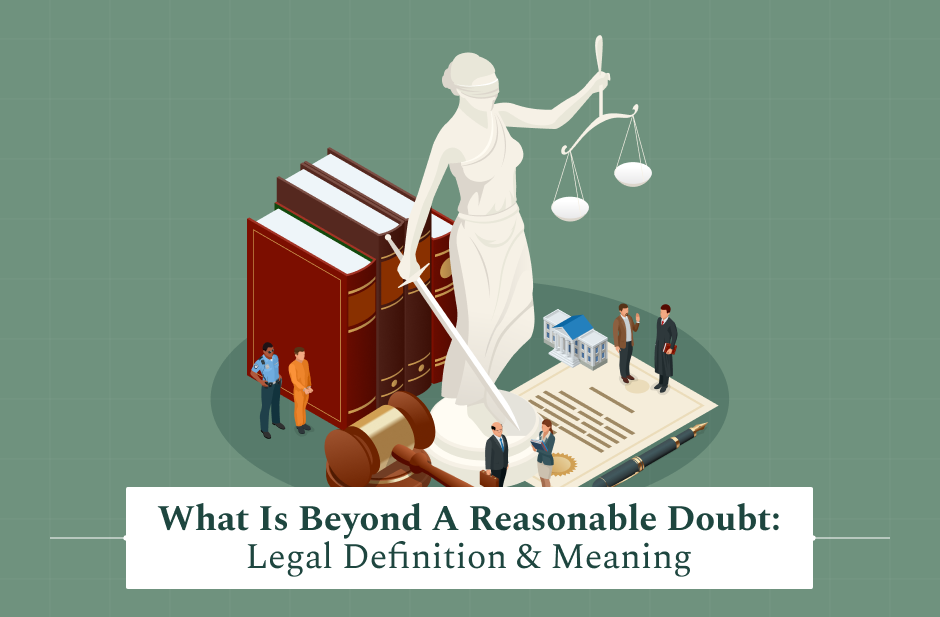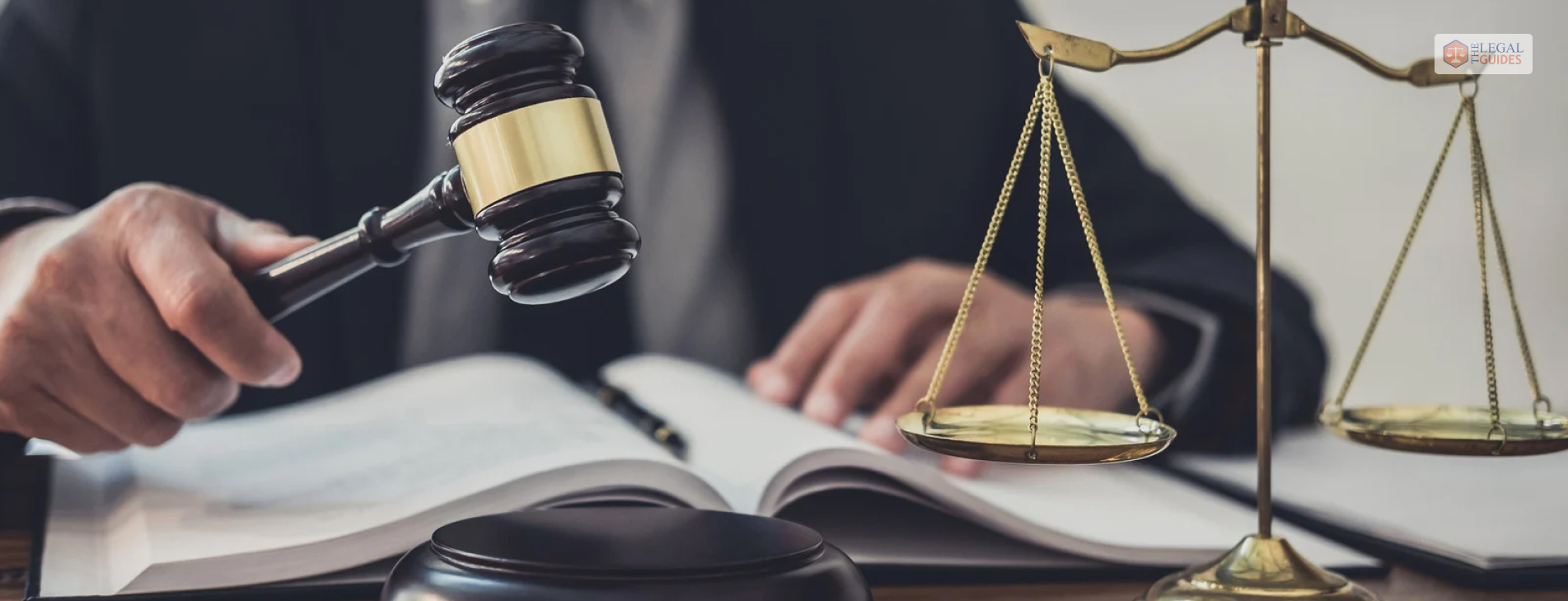One phrase people often associate with the law when they think of criminal trials is “beyond a reasonable doubt.” Not only is it a crucial concept in the law of crime, but it also embodies the highest standard of proof. This standard is set to avoid the wrongful conviction of the defendants, as well as to ensure some level of fairness in the justice system.
However, precisely, what does the term ‘beyond a reasonable doubt’ mean? Are there any differences in the definition of this term in various jurisdictions? And most importantly, why do criminal cases need it so much?
In this article, I will explain the following things:
- What is beyond a reasonable doubt?
- What are the key aspects of BRD?
- Where does BRD stand?
- How does it work?
- Legal impact of beyond a reasonable doubt.
Additionally, I will also answer some of the questions that people also ask when it comes to BRD. Therefore, if these are some of the things that you want to know, keep on reading this blog till the end…
What Is Beyond A Reasonable Doubt?

Beyond a reasonable doubt (BRD) is the required legal proof that applies in criminal cases. It implies that, among other things, the prosecutor’s evidence must be so persuasive as to leave no room for any reasonable person to doubt the accused’s guilt if the verdict is to be a conviction one.
The Legal Information Institute defines it as “the legal burden of proof required for a criminal conviction. In a criminal case, the prosecution must prove the defendant’s guilt beyond a reasonable doubt, meaning the evidence must leave jurors firmly convinced of the defendant’s guilt.”
In re Winship (1970), the U.S. Supreme Court defines BRD as “a constitutional requirement” in criminal prosecutions, as per Justia.
The standard in the UK is similar in that the jury must be sure of guilt before a verdict of guilt. The lawyers point out that judges most probably frequently put it in such words as, “Are you sure the defendant is guilty?” Along the same lines, BRD in India is a part of the concept that a person is innocent until proven otherwise.
Beyond a reasonable doubt is the strictest burden of proof. And here’s a table that will demonstrate why:
| Standard of Proof | Used In | Level of Certainty Required |
| Preponderance of Evidence | Civil cases | More likely than not (>50%) |
| Clear and Convincing Evidence | Certain civil & fraud cases | High probability (~75%) |
| Beyond a Reasonable Doubt | Criminal cases | Moral certainty; no reasonable doubt (>95%) |
What Are The Key Aspects Of Beyond A Reasonable Doubt?
To grasp BRD fully, one must understand its key aspects:
- Presumption of Innocence: Every defendant starts a trial presumed innocent. The burden lies entirely on the prosecution. This principle is enshrined in Article 11 of the Universal Declaration of Human Rights.
- Reasonable, Not Absolute, Certainty: BRD doesn’t mean eliminating all doubt—just doubts based on reason and logic. Absolute certainty is impossible in human affairs.
- Applied to Every Element of a Crime: The prosecution must prove each element of the alleged crime (e.g., intent, action, causation).
- Jury Instructions Matter: Judges carefully instruct jurors on what BRD means to avoid confusion. For example, in Victor v. Nebraska (1994), the U.S. Supreme Court stressed that juries should be told BRD requires proof that leaves no “reasonable doubt in a juror’s mind.”
In What Cases Does “Beyond A Reasonable Doubt” Stand?
BRD applies primarily in criminal cases, including the following:
| Felonies & Misdemeanors | Theft, assault, murder, etc |
| White-Collar Crimes | Fraud, embezzlement, insider trading |
| Juvenile Cases | As established in In re Winship (1970), juveniles also benefit from BRD |
It does not apply in:
- Civil trials (divorce, contract disputes, property cases).
- Administrative hearings (employment disputes, tax penalties).
Example:
- In the O.J. Simpson criminal trial (1995), prosecutors failed to prove guilt beyond a reasonable doubt, leading to an acquittal.
- In the subsequent civil wrongful death lawsuit, the plaintiffs succeeded under the lower “preponderance of evidence” standard.
How Does Beyond A Reasonable Doubt Happen?
The BRD standard is implemented through a trial process:
- Presentation of Evidence: The Prosecution presents the court with the testimony, documents, and forensic results.
- Cross-Examination: The Defense questions the reliability and truthfulness of the evidence.
- Closing Arguments: Each side points out how the presented evidence meets or does not meet the BRD threshold.
- Decision of the Jury/ Judge: The jury deliberates (or the judge decides in bench trials).
In order to convict:
- The jurors, in the majority of U.S. jurisdictions, must be unanimous (in most U.S. jurisdictions) that the guilt of the defendant has been established beyond a reasonable doubt.
- The defendant should be set free if any reasonable doubt still remains.
What Are The Legal Impacts Of “Beyond A Reasonable Doubt”?

“Beyond a reasonable doubt” is the highest standard of proof in law that aims to safeguard the innocent and maintain fairness in judicial criminal cases. However, it does not mean absolute certainty. Therefore, it requires strong evidence that persuades reasonable people to believe it is guilty.
This standard of proof is extremely important and it helps people to better understand the safeguards that exist in the criminal justice system and also reason why wrongful convictions remain rare, but still, events of a serious nature when they happen.
Below are some of the ways the principle of beyond a reasonable doubt affects society:
- Protects Defendants’ Rights: It avoids getting innocent people jailed by necessitating the highest possible level of certainty through “beyond a reasonable doubt”.
- Creates Public Confidence in Justice: The public is convinced that the courts are not relying on flimsy evidence to make their decisions, but strong and robust ones.
- High Burden for Prosecutors: It is a hard task for courts to convict people, except if enough evidence in favor of this is provided to them.
- Influences Appeals: If appellate judges believe that jury instructions on BRD were not given correctly, then reversals of convictions may be the result.
- Balance of Justice: BRD is the concept that embodies the society’s decision to choose letting a guilty person walk free rather than convicting an innocent one (Blackstone’s ratio).
Frequently Asked Questions (FAQs):
Now that you know what is beyond a reasonable doubt, here are some of the questions that people often ask when it comes to the same topic. Take a look at these before leaving:
No. It means no reasonable doubt remains, but absolute certainty is not required.
The jury (or judge in bench trials) applies common sense and reason to decide.
No. Civil cases use lower standards like “preponderance of evidence.”
Because defendants face loss of liberty or even life, the justice system requires the strongest proof standard.
Yes. If a jury is misled about the meaning of BRD, appeals courts may overturn the conviction.
















